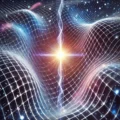Once You Have Defined a Symbol You Have Defined a Point of View
Explanation
The symbols and terminology used in science profoundly shape understanding, interpretation, and exploration. A symbol like “black hole” carries implicit assumptions, influencing theoretical development. “Black hole” evokes an abyss where energy and matter disappear, leading to theories aligned with this conceptualization. Describing the same entity as a “nexus of energy” or “concentration point” might shift focus to energy transformation, leading to different inquiries.
This issue extends beyond specific terms. Consider “physics” itself. The term implies a bias toward the “physical” (particles, mass), while the underlying reality might be rooted in “energy”—a non-physical precursor from which the physical world emerges. This linguistic bias could subtly direct research away from exploring fundamental energetic processes.
Clarity and precision in choosing symbols are crucial. Symbols guide data interpretation, shape questions, and influence hypotheses. Ambiguous or misleading symbols can create conceptual traps, fixating researchers on tangential or incorrect interpretations. To advance knowledge effectively, symbols must reflect underlying realities as accurately as possible, enabling clearer, more unbiased exploration.
